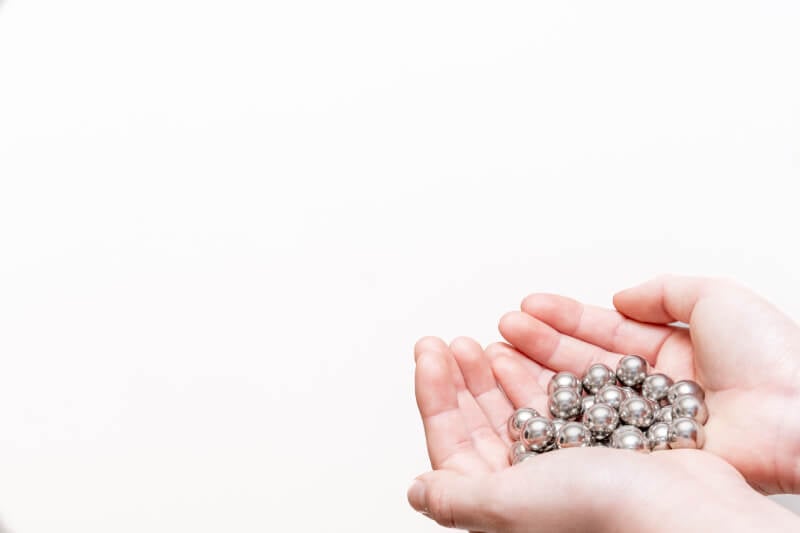The worth of a pachinko ball in Japan varies depending on the context. In the game, each pachinko ball can represent a different value, which typically ranges from one yen to several hundred yen. Here’s a simplified breakdown:
- Low-Value Machines: In machines designed for low bets, one pachinko ball might be worth approximately one yen.
- High-Value Machines: For higher stakes, a pachinko ball can be valued up to hundreds of yen.
It’s important to remember the actual ‘cash’ value outside the pachinko parlors is nonexistent. Pachinko balls cannot be exchanged directly for cash in compliance with Japanese gambling laws. Instead, they are traded for prizes or tokens, which can then be exchanged for money at a separate establishment.
Value of Pachinko Balls and Tokens:
- Rental Rates: A pachinko ball’s rental rate is typically around 4 yen. Tokens, on the other hand, have a rental value of approximately 20 yen each.
- Redemption Rates: When you’re finished playing, the average redemption rate for a ball is about 2.5 yen, and for a token, it is around 12.5 yen.
| Item | Rental Rate (per item) | Average Redemption Rate (per item) |
| Ball | 4 yen | 2.5 yen |
| Token | 20 yen | 12.5 yen |
If you’re looking to purchase pachinko balls for personal use, like for a home machine in the United States, market prices may fluctuate based on condition and quantity:
- Used Balls: They can be bought in bulk, often in sets of 500, at varying prices from around $75.99 based on the quality and seller.
When assessing the worth of a pachinko ball, it’s critical to gauge whether you are looking at its in-game utility or its collectible or personal use value outside the parlor.
Factors that Influence the Value of Pachinko Balls
Material and Manufacturing Techniques
Pachinko balls are traditionally made of steel, but differences in material quality and manufacturing can affect their value. For instance, standard pachinko balls are generally identical and mass-produced. However, balls that are engraved or have hand-painted designs can be collectible and valued higher. Moreover, balls made from precious metals like gold or silver are particularly desirable. The choice of metal versus plastic also plays a role; metal balls are more classic and preferred, while plastic ones are less valued.
- Common Materials: Steel (most common), Gold, Silver
- Special Features: Engravings, Hand-painted designs, Limited edition markings
Rarity and Scarcity
The number of remaining balls of a particular type influences their value. Rare pachinko balls, including limited edition and discontinued designs, are particularly valuable to collectors. Specific rare pachinko ball types may also have been produced in limited quantities, making them more sought-after. If you encounter vintage pachinko balls or balls from a renowned manufacturer or parlor, they may hold more value due to their scarcity.
- Increased Value: Limited edition, Discontinued designs, Rare manufacturers
- Collectible Types: Vintage, Special commemoratives
Condition and Age
The value of pachinko balls is significantly affected by their condition. Mint condition pachinko balls are the most prized, often retaining their original luster and design features. Antique pachinko balls can be valuable, but their worth diminishes if they show significant wear and tear. Collectors typically prefer vintage pachinko balls that maintain a pristine appearance over those that may have faced rough handling over the years. It’s important to note that not all old balls are valuable; their worth is dependent on both age and condition.
- Factors Affecting Condition: Wear and tear, Exposure to elements, Handling
- Considerations for Age: Antique (50+ years), Vintage (20–50 years)
How Do You Date a Pachinko Machine?
Expiration Tags
The first method to date a Pachinko machine is the expiration tags. The tags are affixed to the playfield with glue, a small nail, or a staple. These are certification stamps with the date that the Japanese Gaming Authority would affix when the machine was installed in the parlors. The date on the sticker is usually a year later than the date of manufacture because that was the period when various models were sold and certified.
Some machines have rectangular and circular tags showing the year the machine was certified. You may find the numbers 52 and 7 in small font on a sticker. The 52 is not 1952, but the Shōwa year 52. You need to convert this to find the actual year of manufacture. Add 1925 to the number, for instance here, 1925 + 52 = 1977, so the tag indicates 1977. That means the machine was likely manufactured in 1976 because 1977 is when it was to be removed from the parlor.
How much do pachinko balls weigh?
Each pachinko ball weighs about 0.4 ounces or 11 grams.
Can you monetize pachinko balls, and if so, how?
Pachinko balls can be exchanged for prizes or tokens that can then be converted into money at a separate establishment.
What is the average cost range for purchasing a pachinko machine?
Pachinko machines range from $100 for simple models to several thousand dollars for high-end, brand-new units.
How does the restoration of a Pachinko machine impact its market value?
Restoration can significantly increase a machine’s value, especially if it is done professionally and maintains the machine’s original features and functionality.

